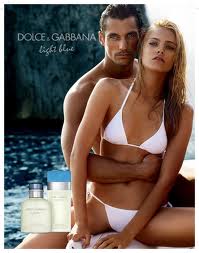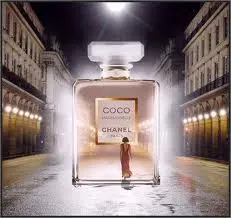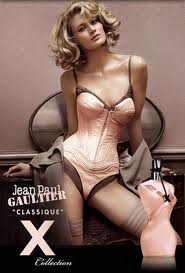I had a long conversation tonight with a fellow perfume blogger, Scent Bound, on the cultural differences between American and France, and each countries’ accompanying fragrance preferences. The issue was initially triggered by the comments on indolic scents like tuberose discussed in my Guerlain Mahora/Mayotte post. As a random observation, I told him that I think French women are much less terrified of certain kinds of categories of perfumes or scents than, say, the Americans.
Scent Bound noted: “I recall Chandler Burr made similar observation to yours regarding how North Americans and European see fragrance. North Americans wear a fragrance as if to say ‘don’t run away, I’m clean’ and Europeans wear a fragrance as if to say ‘come to me, I’m sexy’. It’s pretty hilarious but if you think about it, it’s sort of true.”
how North Americans and European see fragrance. North Americans wear a fragrance as if to say ‘don’t run away, I’m clean’ and Europeans wear a fragrance as if to say ‘come to me, I’m sexy’. It’s pretty hilarious but if you think about it, it’s sort of true.”
I think it’s both hilarious and true. I find it extremely interesting to note the differences in tastes as reflected by the list of top best-sellers for women in 2011 for the U.S. versus the best-seller list for France. Surrender to Chance has a sample pack of each country’s best-sellers with some amusing observations, but the main point are the perfumes on the list themselves:
The list is in no particular order, Chanel Coco
Mademoiselle came in Number 1.
-
Chanel Coco Mademoiselle – citrus adds a lightness to this gorgeous oriental
-
Dolce & Gabanna
 Light Blue – citrus, easy to wear, the quintessential “reach for it” perfume
Light Blue – citrus, easy to wear, the quintessential “reach for it” perfume -
Chanel No. 5 – No. 1 in France, a fragrance that has been around for decades and topping the best selling list wordlwide, this is The Iconic Classic perfume
-
Clinique Happy – fruity floral that complete reflects its name
-
Donna Karan Cashmere Mist – musk, woods, floral
-
Viktor & Rolf Flowerbomb – an exuberant floral with a rich base
-
Lancome Tresor – rose, violet, iris, peach, a perennial favorite
-
Christian Dior J’Adore – a now iconic fresh green floral that is at the top of the best-seller list in many countries
-
Ralph Lauren Romance – romantic floral with touches of musk and ginger
-
Burberry Body – floral oriental, easy to wear
-
Marc Jacobs Daisy – fun, easygoing, touch of caramel, and absolutely easy to wear
-
Chanel Chance – citrus floral that borrows from Angel and Coco Mademoiselle
-
Estee Lauder Sensuous – elegant woody floral
-
Estee Lauder Pleasures – green floral that can be smelled everywhere
-
Chanel Chance Eau Fraiche – a fresher version of Chance
-
Clinique Aromatics Elixir – Crossing international lines to appear on both French and American best-seller lists
-
Fendi Fan di Fendi – fruity floriental. Why won’t Fendi just start making Theorema again and stop with the stuff that’s not anywhere near its class?
-
Prada Candy – yeah, really, and there’s a reason for it. Addictive, classic and fun!
In contrast, the top best-sellers in France for the same year (2011) are:
-
Chanel No. 5 EDP – iconic decades-old perfume that has topped the best-seller list for most of those decades.
-
Dior J’Adore – now overtaking Chanel no. 5
 worldwide, J’Adore is a fresh green floral that is wonderful to wear
worldwide, J’Adore is a fresh green floral that is wonderful to wear -
Thierry Mugler Angel – Every street in Paris wafts this scent
-
Chanel Coco Mademoiselle – a rich oriental with
 amazing sillage
amazing sillage -
Kenzo Flower – a soft floral oriental
-
Guerlain Shalimar EDP – vanilla oriental from a rich and storied house
-
Lolita Lempicka – one of Angel’s softer, gentler children, a woody gourmand
-
Christian Dior Miss Dior Cherie – sophisticated, but slight gourmand leaning with popcorn and strawberry (in the older versions, not the newest version – this one is the older formulation)
-
Nina Ricci Nina – (the old one, the original, the best, not that new thing)
-
Yves Saint Laurent Paris – violet, rose, romantic
-
Yves Saint Laurent Opium – a spicy oriental that defines that classification
-
 Jean Paul Gaultier Classique – could be the bottle? Naw, this is a scent you don’t forget
Jean Paul Gaultier Classique – could be the bottle? Naw, this is a scent you don’t forget -
Lancome Tresor EDP – peach, rose, iris and violet, a perennial favorite
-
Thierry Mugler Alien – Not loved so much in the U.S., but this odd Mugler fragrance is a big hit in France.
-
Nina Ricci L’air du Temps – a spicy floral that has endured a long test of time
-
Clinique Aromatics Elixir – a classic chypre that never goes out of style.
-
Lancome Cuir de Lancome – classic citrus and orange blossom fragrance with an amber base.
When I was growing up in France, the predominant trend was for chypres, then perhaps for orientals. Now, it seems that orientals have, for the most part, supplanted the classic. Scent Bound noted that, upon a trip to Paris last year, the majority of men seemed to be wearing sweeter, woody-oriental fragrances. I thought that was a definite change from the beloved classiques they used to wear and which were predominantly in the fougère or citrus aromatic categories. He noted that, in his country, the predominant perfume group is acquatics. (Remind me not to visit!)
Which turned the conversation around to what would be on the MEN’S list of best-sellers for 2011 or 2012? What do you think they would be and how would they differ from country to country? Scent Bound had these choices for his Top 3 in the US and in France:
North America Top Fragrance List:
1. Armani Acqua di Gio
2. Chanel Bleu de Chanel
3. D&G Light Blue HommeFrance Top Fragrance List:
1. Dior Homme Intense
2. YSL Le Male
3. Terre D’Hermes
I completely agree with his list for the top North American best-sellers. However, I’m not so sure about his French list. For one thing, I think that Terre d’Hermès would be higher. Also, would the top YSL entry really be Le Male, as opposed to its L’Homme or La Nuit de L’Homme? More to the point, the list doesn’t include that infernal bête noire of mine, Acqua di Gio. That revolting thing is too much of a global best-seller not to be a serious contender for one of the top spots. (Even my best friend in Denmark wore it, much to my horror, until my pleas for a change finally took effect.)
Since Google is my friend, I decided to see if I could find the list — for 2011 or even this year to date — of most popular men’s fragrances in any country. Almost immediately, I came upon a fascinating New York Times article on the revival of the  classics for men. (And, its main photo featured, in part, the Monsieur de Givenchy that I wrote about just the other day!)
classics for men. (And, its main photo featured, in part, the Monsieur de Givenchy that I wrote about just the other day!)
Entitled “That Man Smells Familiar,” the article noted that “[i]n Europe, the classics still sell as if it’s 1969; last year Eau Sauvage was the third best-selling men’s fragrance in France, according to the NDP Group, a market research company that tracks sales in department stores.”
Is it the Mad Men effect, or are the fragrances simply benchmarks? The blogging world seems obsessed with the latest niche fragrances, and I sometimes get the impression that there is snobbish disdain for those who express interest in or write about the classics. It’s not hip, it’s not avant-garde or trendy, and it reeks of the old-fashioned (and possibly, in their mind, the insufficiently educated?). Whatever the reason, the experts don’t agree with that modern dismissal of the classic legends. Whether it’s Luca Turin or the founder of Basenotes, Grant Osborne, they both share a reverence for the old-timers. As the New York Times article put it:
Their names evoke two-button Botany 500 suits and martinis sipped in a 707’s front cabin: Eau Sauvage, Habit Rouge, Pour Monsieur. And although sales are a fraction of the overall market for fine men’s fragrances in the United States, experts in the field acknowledge their lasting relevance. “They’re like benchmarks — anything that comes after is almost always a direct descendant,” said Grant Osborne, founder and editor of Basenotes, a Web site for perfume enthusiasts.
Chanel Pour Monsieur, introduced in 1955, “should by all rights be sitting under a triple-glass bell jar next to the meter and kilogram at the Pavillon de Breteuil as the reference masculine fragrance,” wrote Luca Turin, the biophysicist and olfactory scholar and an author of“Perfumes: The Guide” (Viking, 2008). Christian Dior’s Eau Sauvage, introduced in 1966, revolutionized the men’s category as the first perfume to make heavy use ofhedione, a synthetic analog of jasmine; Guerlain Vetiver, based on the aromatic grass and introduced in 1961 after similar scents by Givenchy (1959) and Carven (1957), continues to beget modern iterations like Grey Vetiver, by Tom Ford. These classic men’s fragrances “left very long-lasting impacts on how people develop perfumes,” said Eddie Roschi, a founder of Le Labo artisanal perfumery in New York.
While Old Spice and Brut are still enormous (enormous!) sellers, the young aren’t buying the “Old is Good” line. Not one bit. “[F]or a generation raised on CK Be and body sprays like Axe, retro scents aren’t necessarily an easy sell.” (See, NYT article.) In fact, one Beverly Hills retailer of vintage fragrances flat out admitted that Chanel’s Pour Homme would not sell well among the young today: “If you introduced this today and it did not have the Chanel brand recognition, I don’t think it would do well.” Why? “You smell it and just know: this is an old fragrance.” (Id.)
The NY Times answered my question as to what was bound to be the top male fragrance in France. As I guessed when talking to Scent Bound, it is indeed that blasted, infernal pestilence known as Acqua di Gio. The article discussed the scent, but also provided some other very interesting tidbits about perfume trends, popular fragrance categories, and why the top sellers remain so constant year after year:
Epitomizing the new is Acqua di Gio, introduced by Giorgio Armani in 1996 and the No. 1-selling fine men’s
fragrance for the past 10 years, according to the NDP Group. Acqua di Gio popularized the light, quiescent “aquatic” accord that dominates men’s fragrances today and has inspired countless imitators — “a slew of apologetic, bloodless, gray, whippetlike, shivering little things that are probably impossible, and certainly pointless, to tell apart,” Mr. Turin said.
Compared to the breezy aquatics, certainly, the classic ’60s scents — with their base notes of musk, oak moss, sandalwood and leather — can seem leaden, especially to younger noses. Nevertheless, sweet, unisex aquatics are ceding market share to scents redolent of woods and spices. Of the top four men’s fragrances introduced in 2010, “two were woods, one was a woody oriental and only one was a water,” said Karen Grant, a beauty industry analyst with the NDP Group.
The introduction last year of Bleu de Chanel, which
despite its sport-aquatic-sounding name is considered a woody aromatic, was a sign that the pendulum is swinging toward earthier accords; it became the No. 3 best-selling men’s scent in the United States.
Men are far more brand-loyal than women when it comes to fragrance, Ms. Grant said, “which is why when something becomes a top scent it continues to be a top scent — it’s hard to break into that ranking.”
I’m not an expert in men’s fragrances, despite wearing them frequently, so I’m curious to know your thoughts. What do you think are the Top 10 or Top 5 lists for men, in your country, in US/North American, in France or elsewhere? What about for women?
I would love to learn about the best-sellers in all countries and for BOTH genders, so please don’t hesitate to chime in regardless of where you live.

